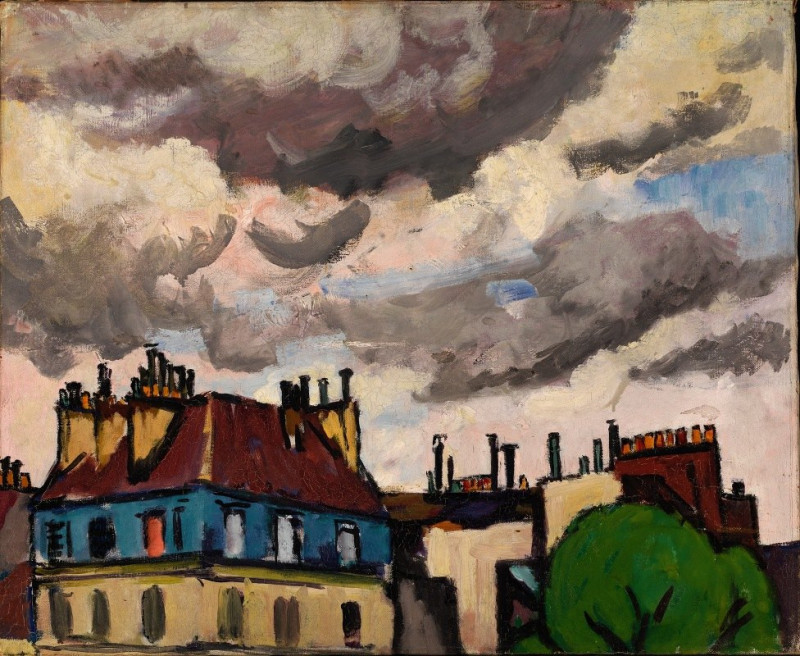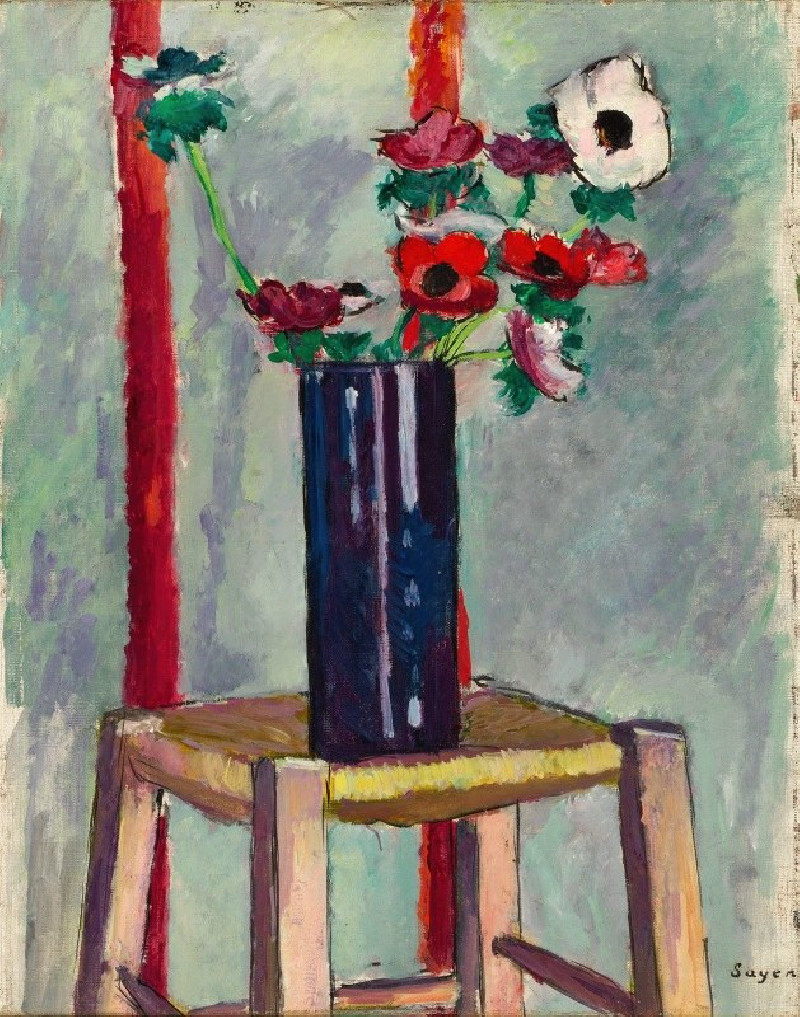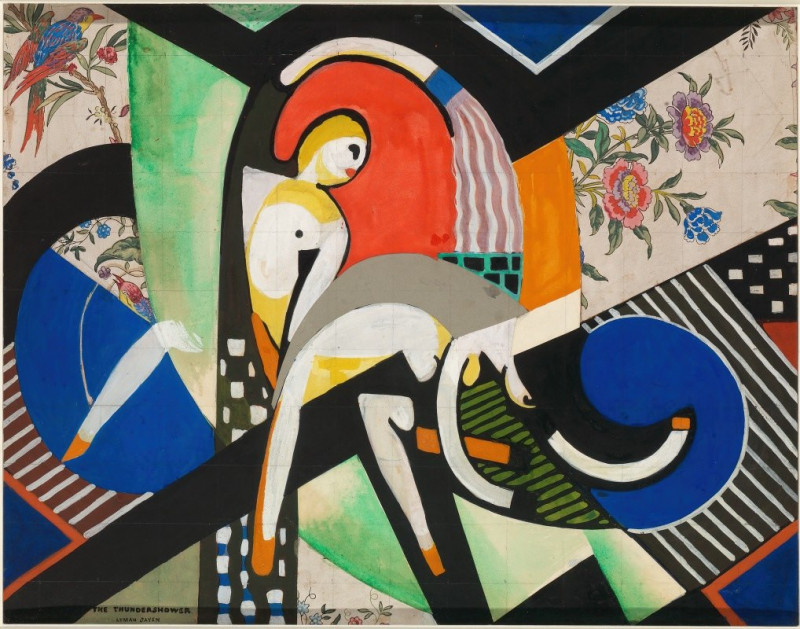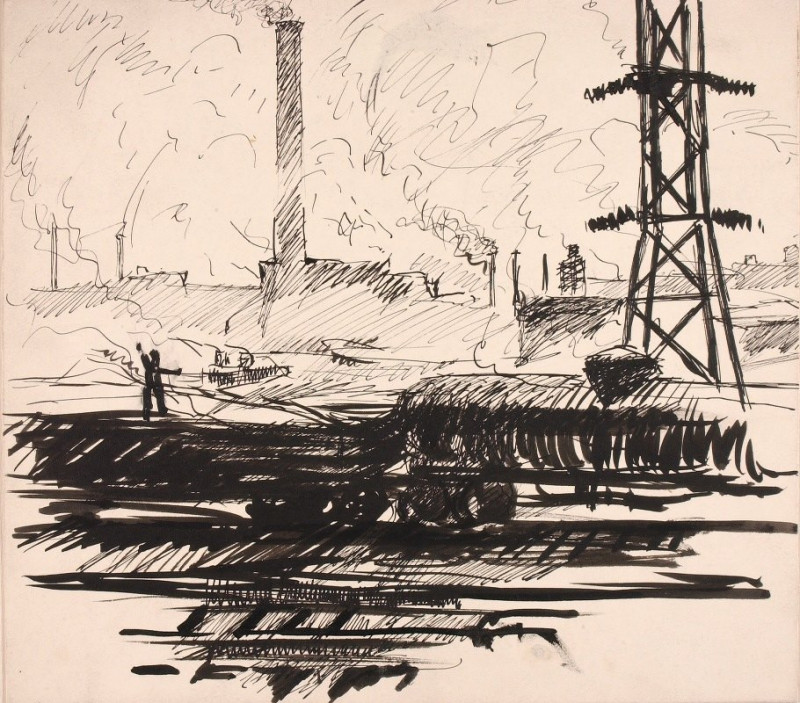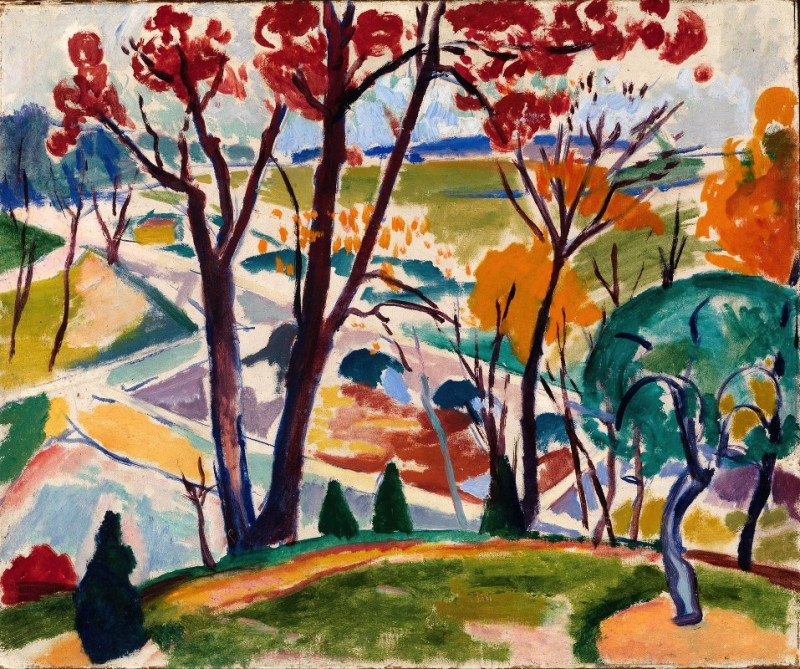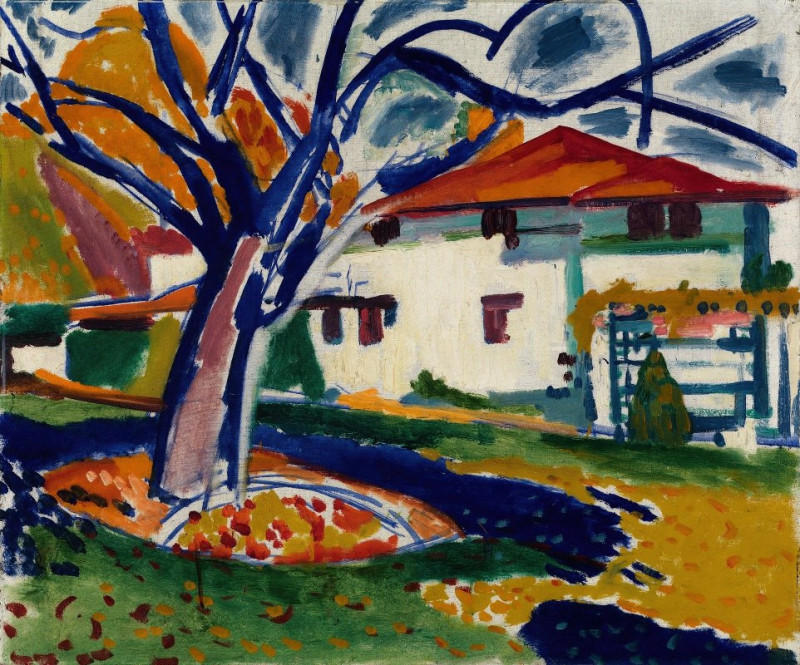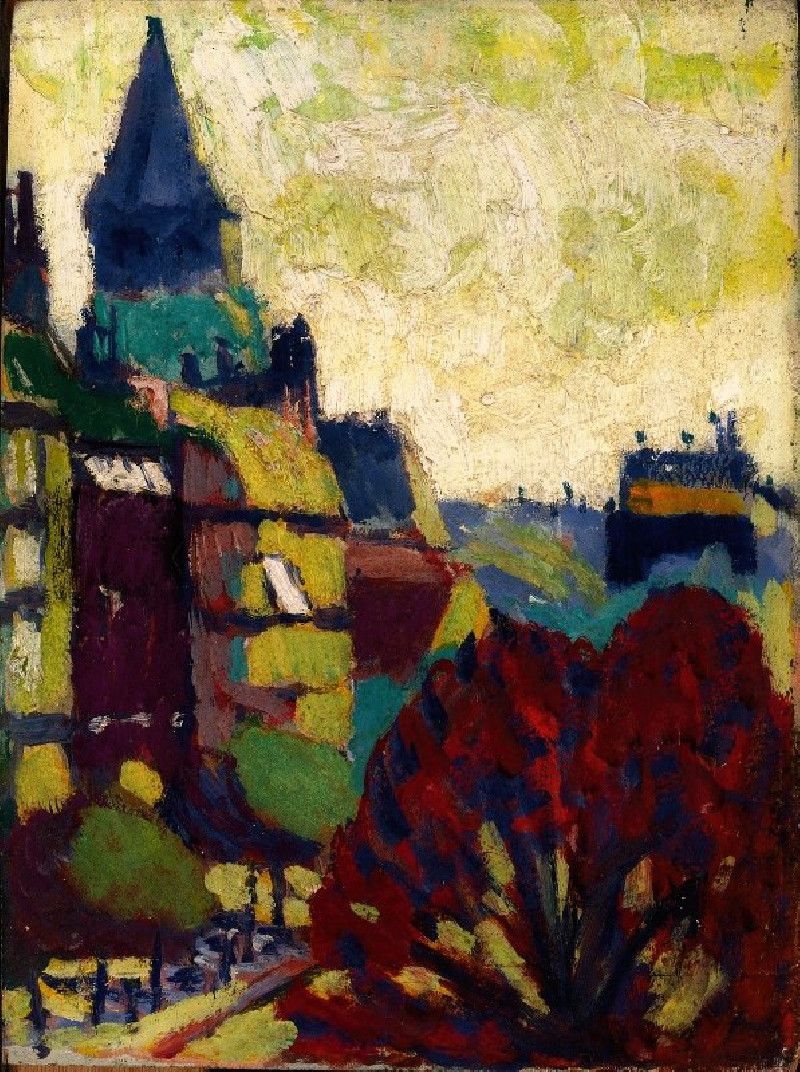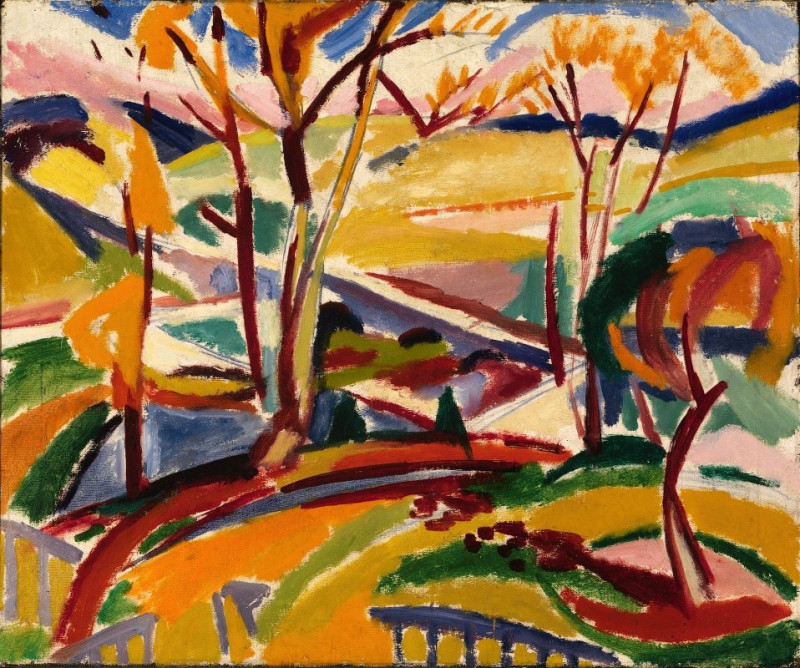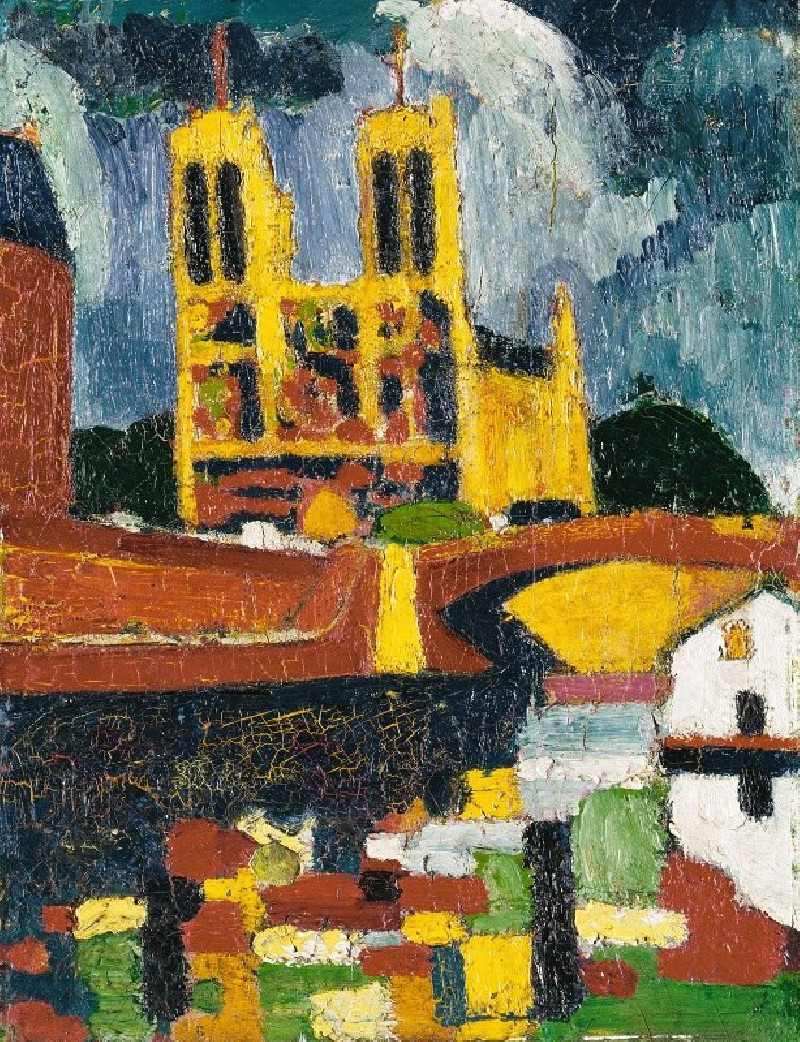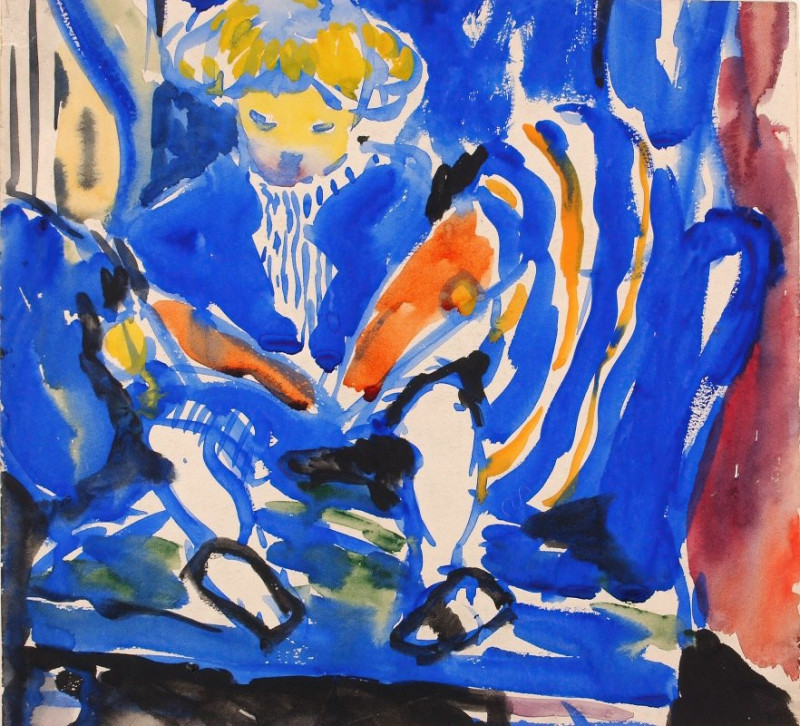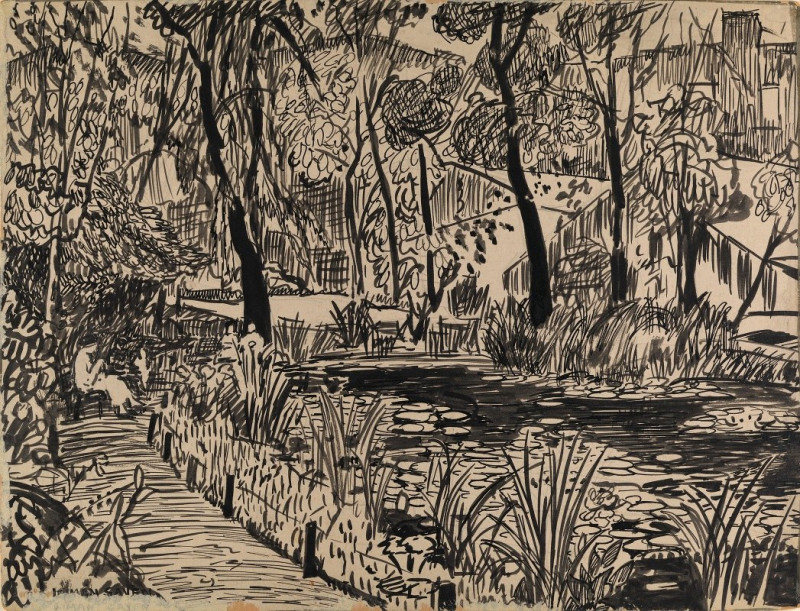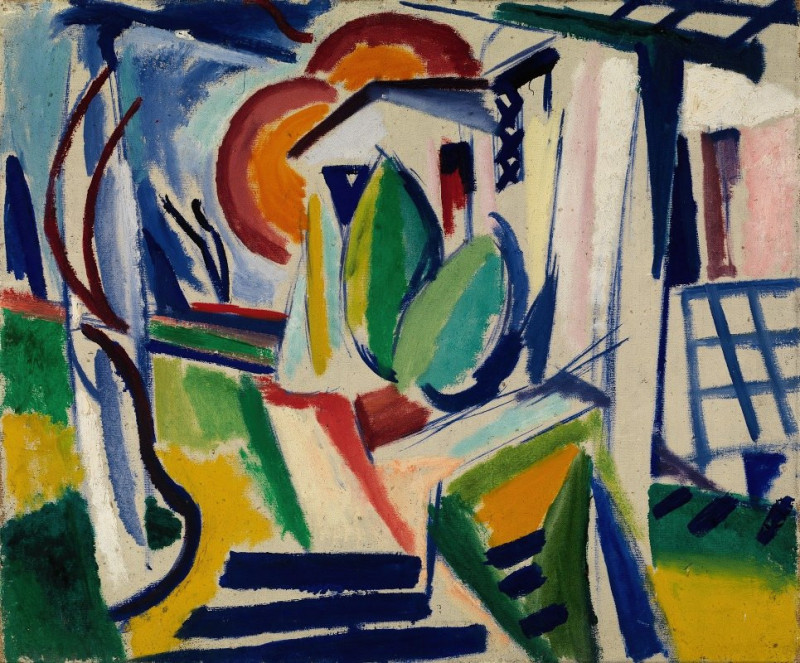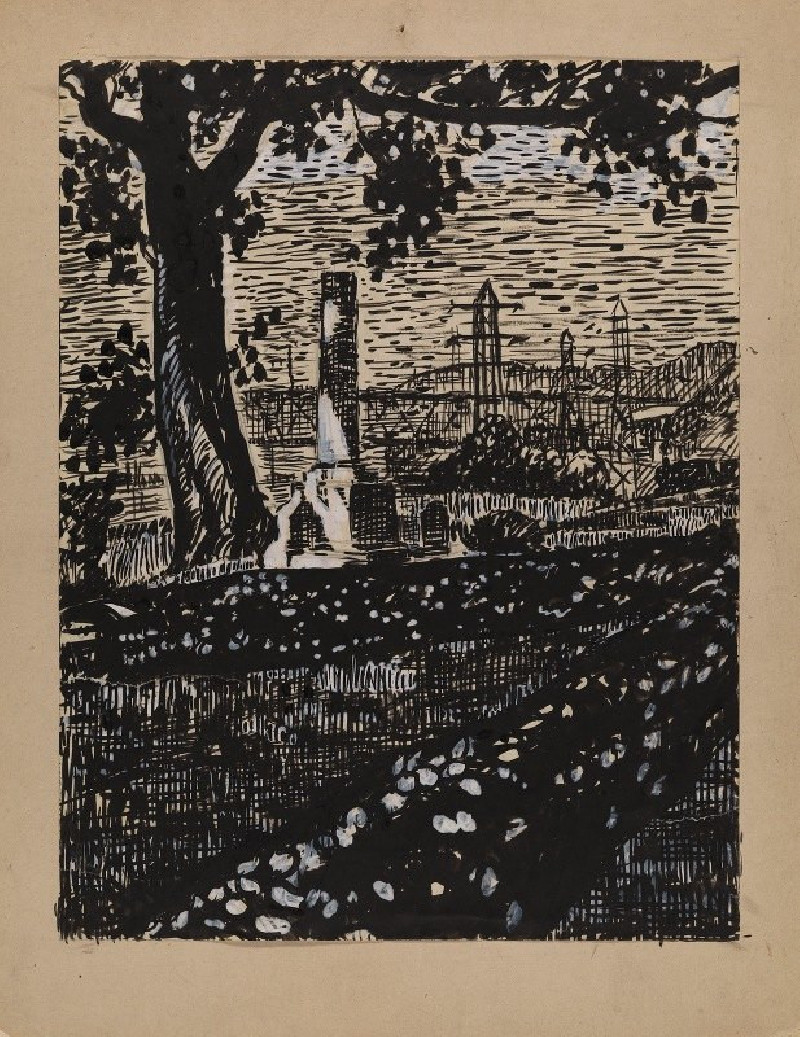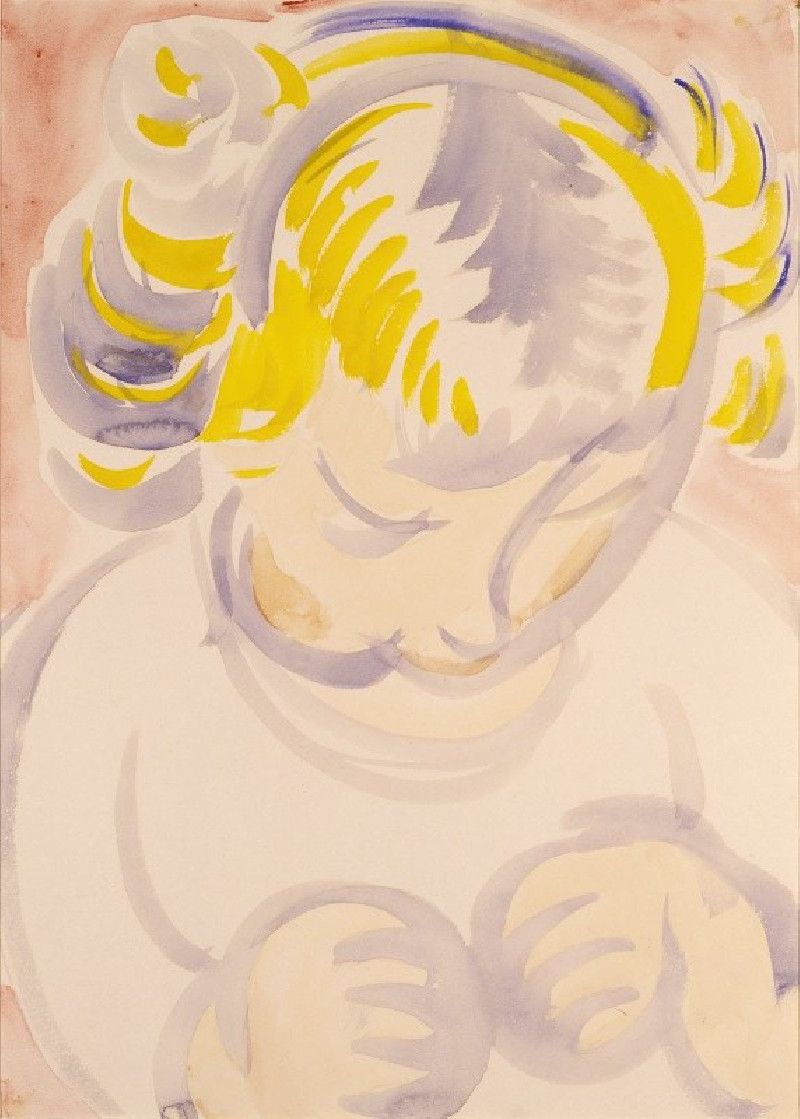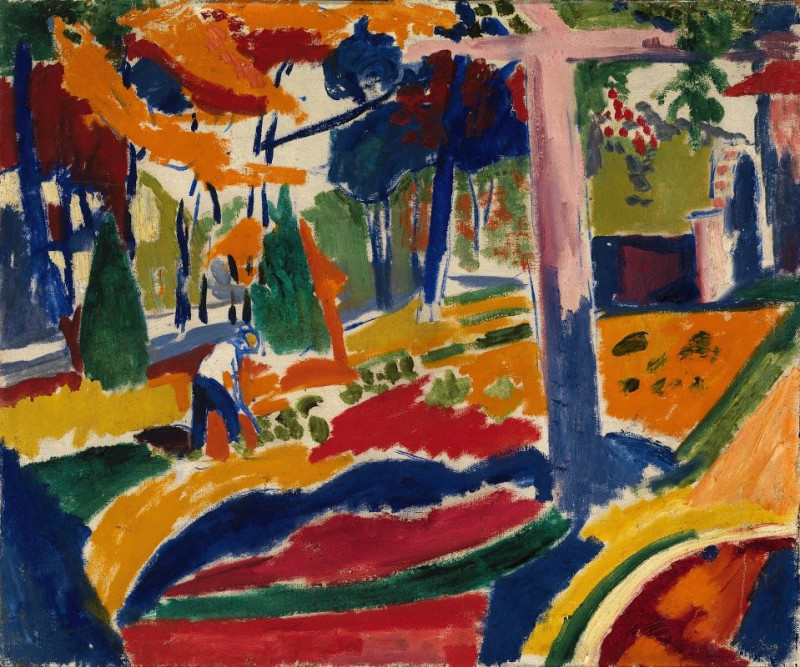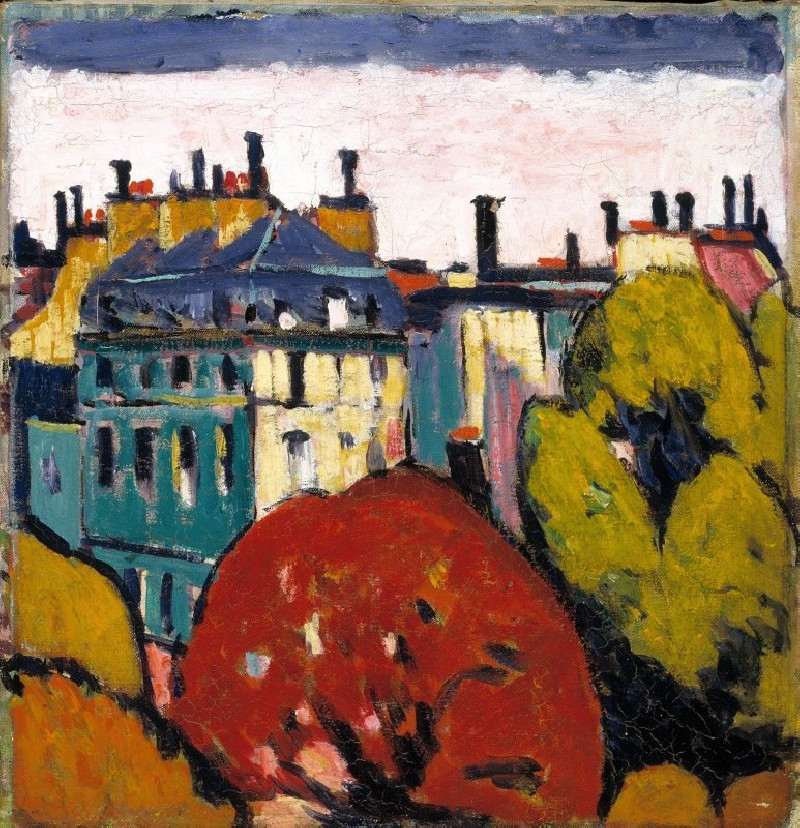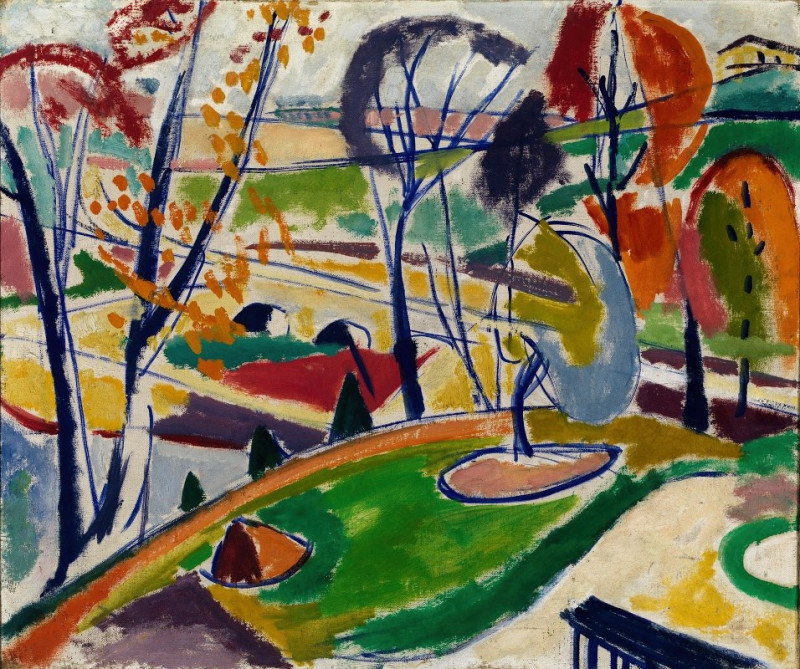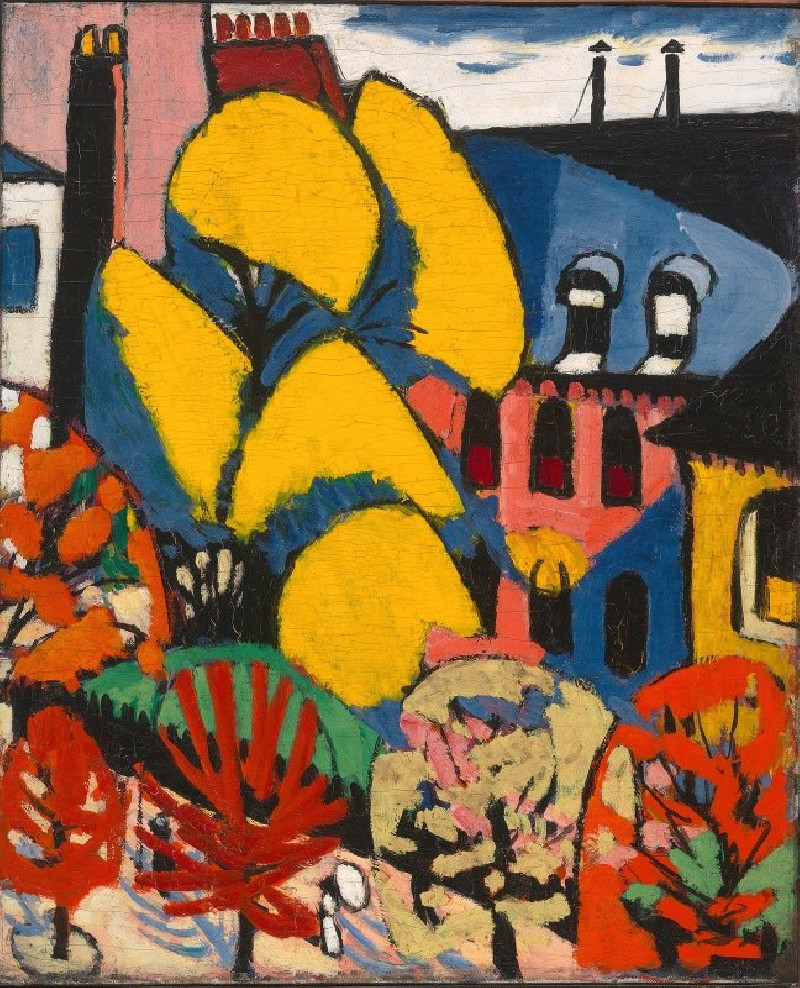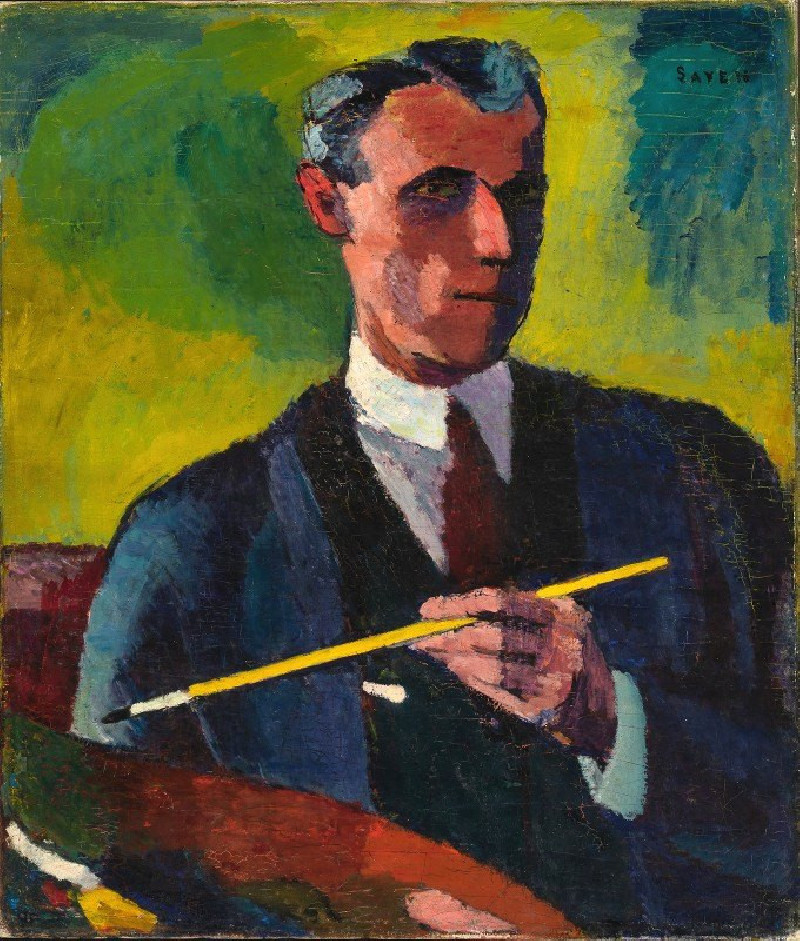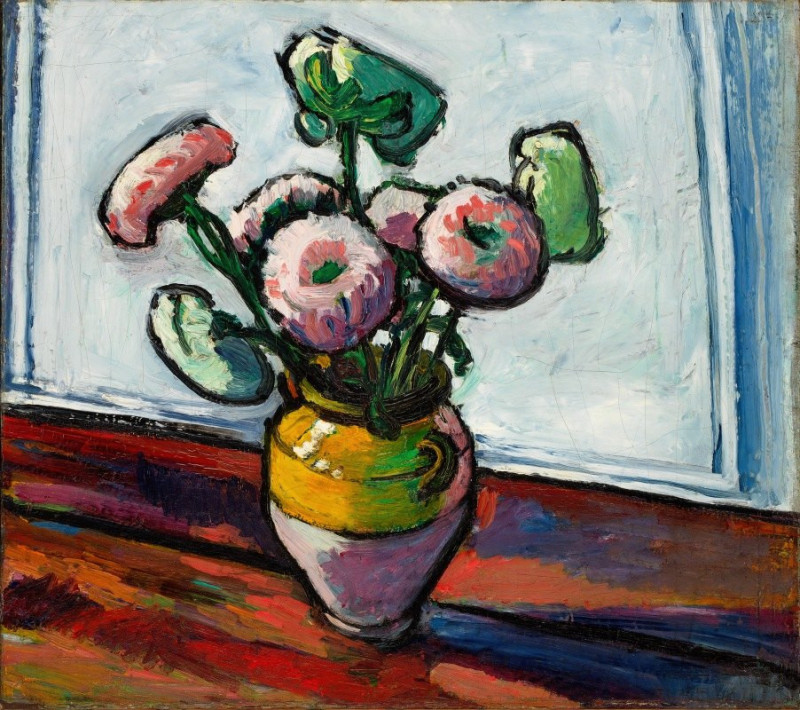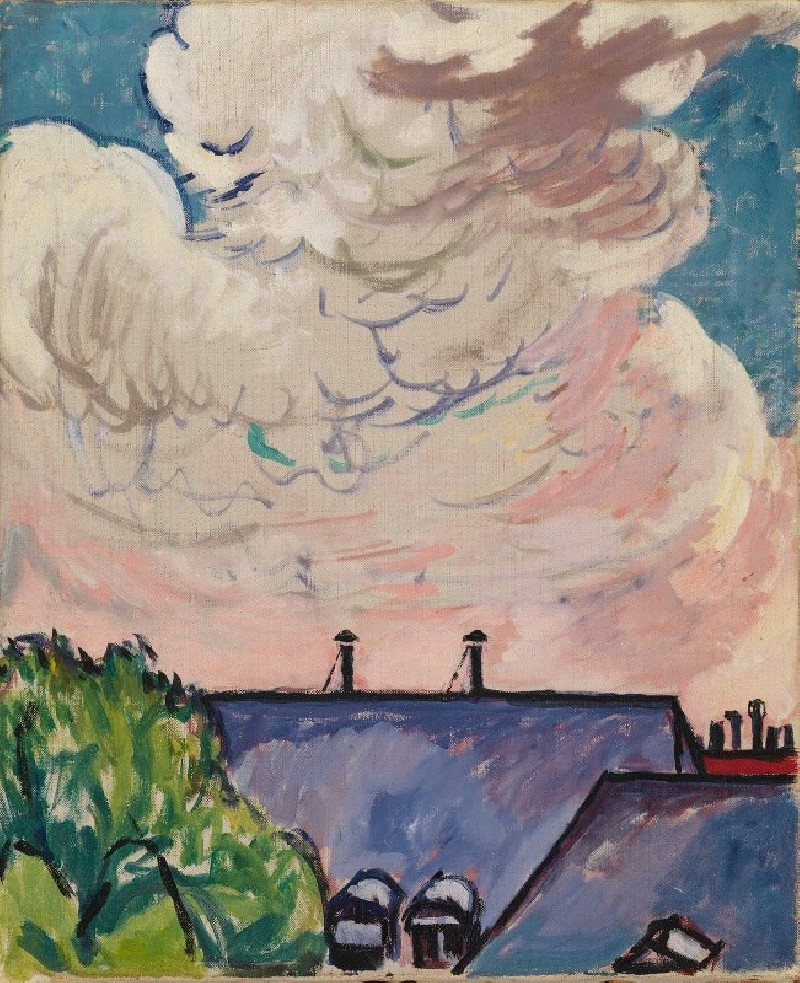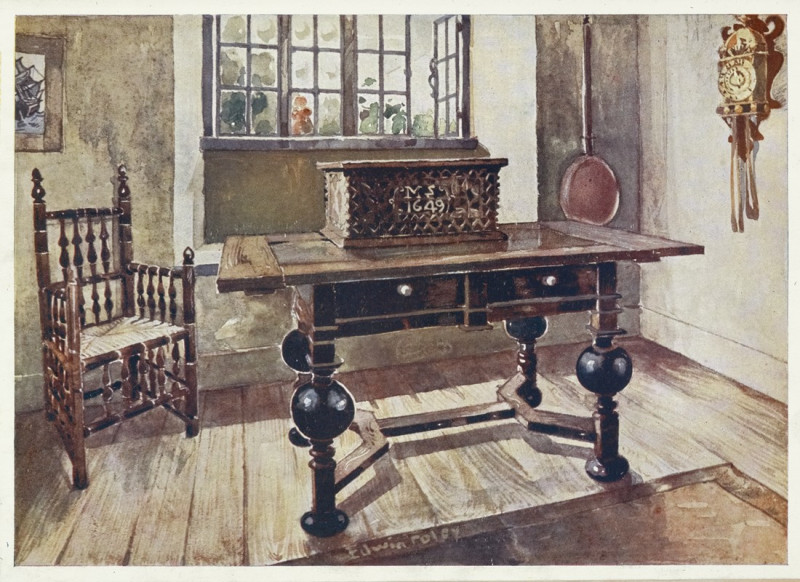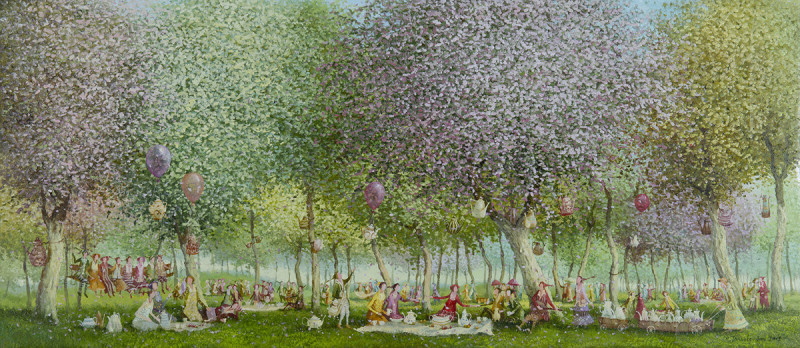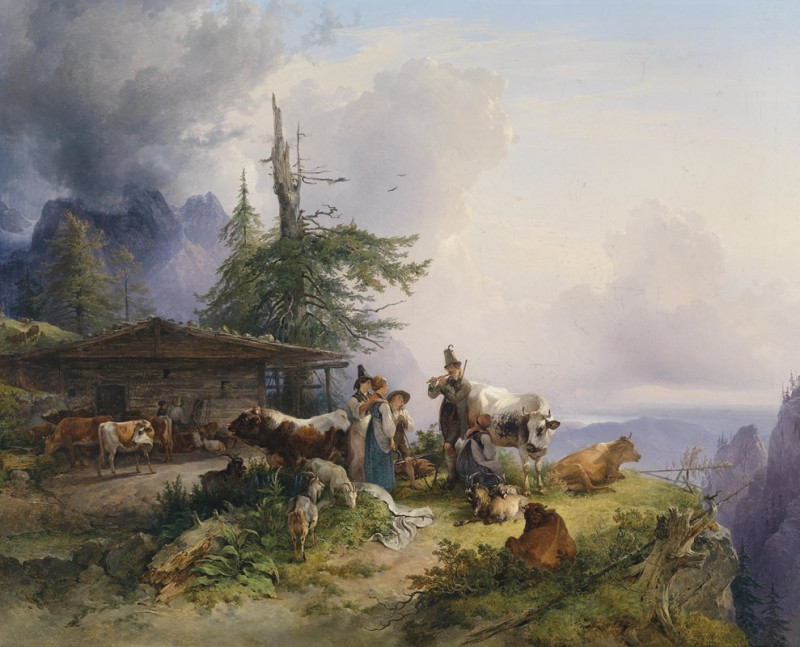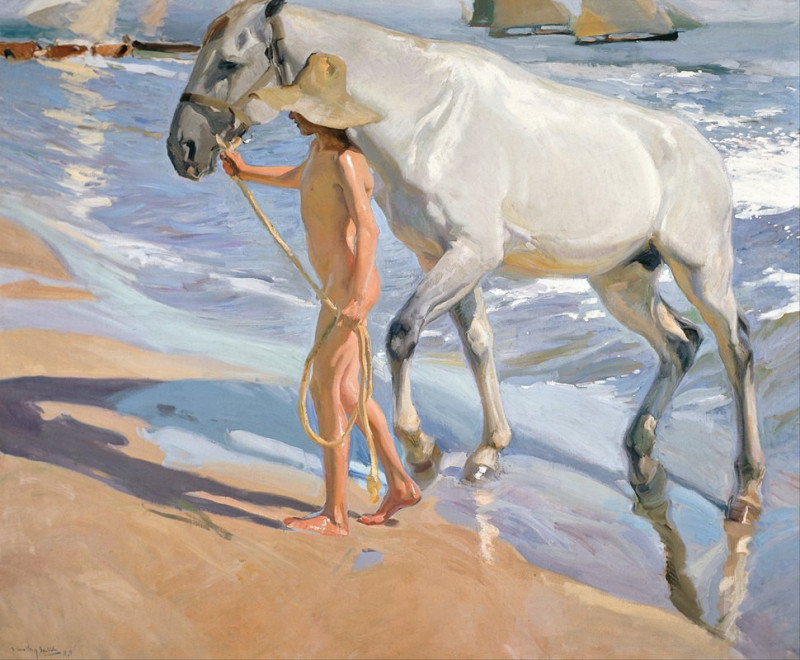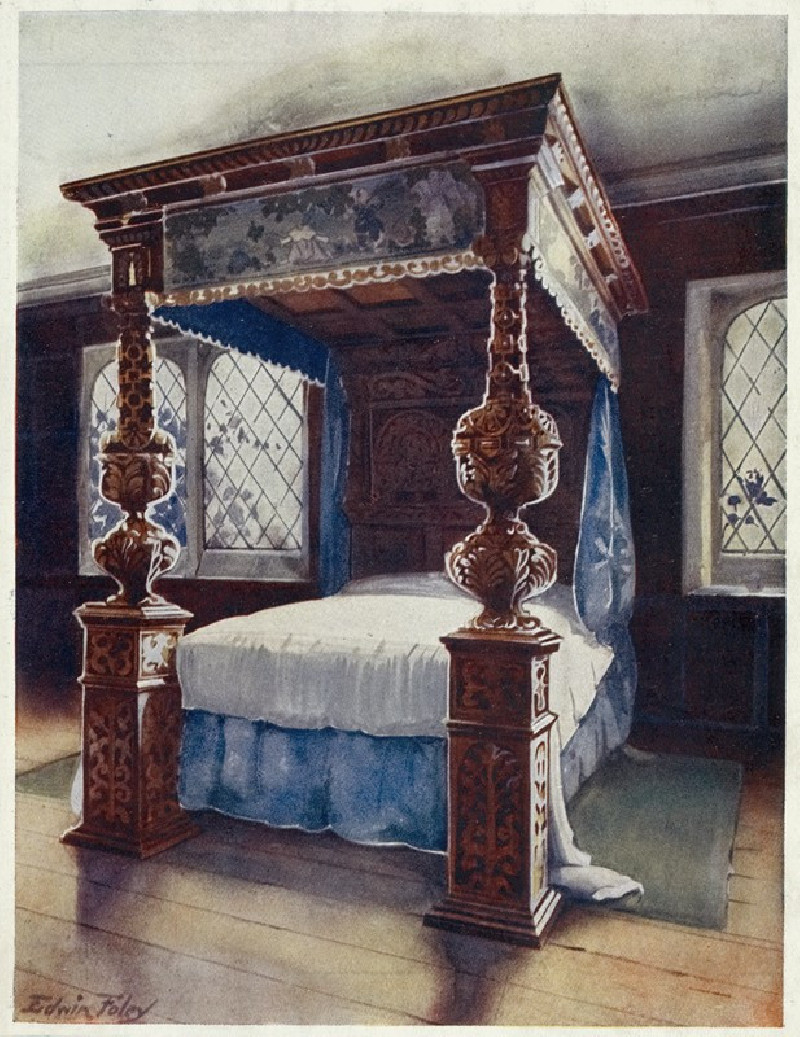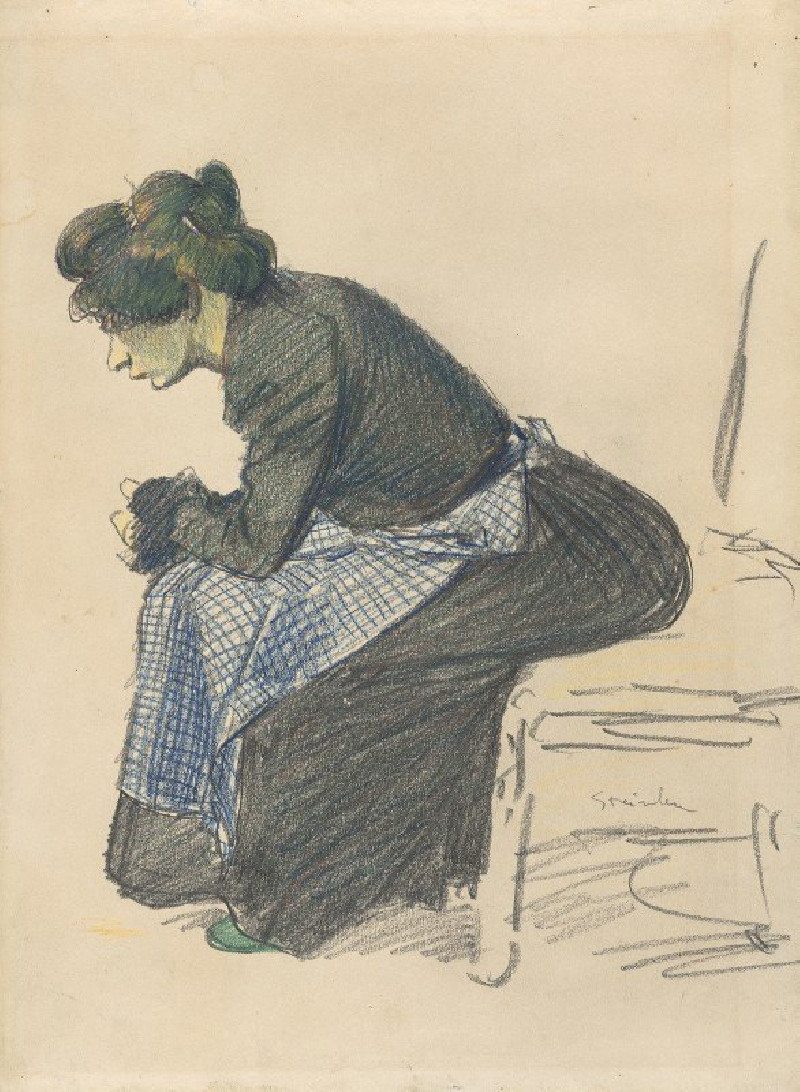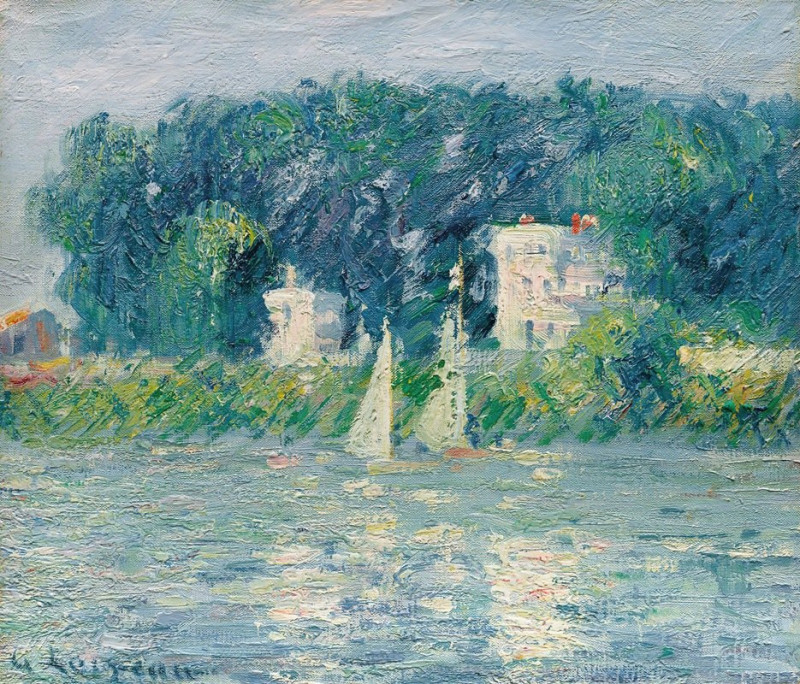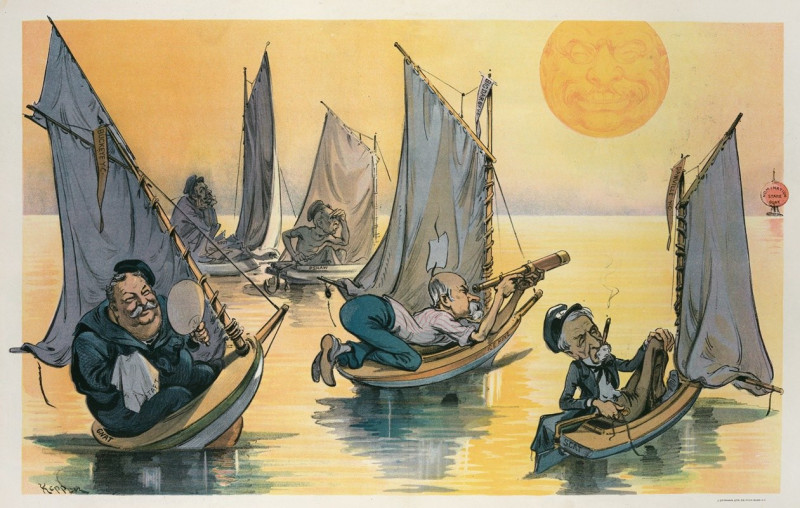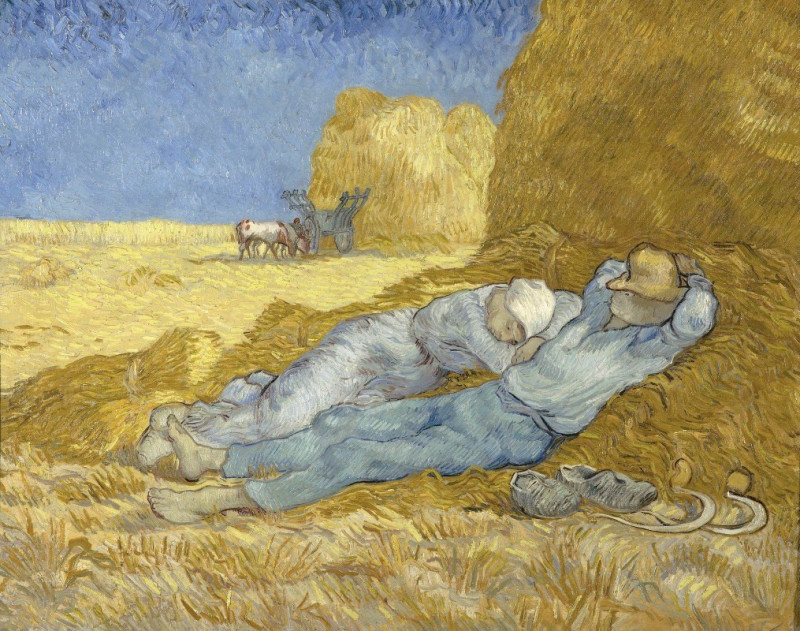Grape Arbor (ca. 1915)
Technique: Giclée quality print
Recommended by our customers
More about this artwork
Henry Lyman Saÿen's painting "Grape Arbor," created around 1915, invites viewers into a vivid exploration of color and form, encapsulating the essence of early modernist expression. This painting beautifully captures the rustic charm of a grape arbor, a tranquil spot where nature and human-made structures intertwine effortlessly.In "Grape Arbor," Saÿen employs bold, dynamic brushstrokes and a vibrant palette to depict a garden scene. The composition is centered around the arbor itself, crafted with intersecting beams that create geometric patterns against the sky. These beams cast deep shadows over the patchwork of garden tiles below, adding a sense of depth and structure to the scene.The viewer’s eye is drawn along a pathway that meanders through the garden, suggesting a journey through this lush, secluded space. Bright greens and blues dominate the landscape, suggesting the vitality of the natural world, while splashes of red and yellow amidst the foliage capture the changing colors of the leaves, possibly hinting at the onset of autumn.Contrasting with the organic forms of the trees and the undulating outlines of the shadows, the architectural elements of the arbor and the adjacent building showcase Saÿen's interest in the interplay between natural and constructed environments. This blend highlights the artist's modernist inclinations, moving away from strict realism and towards an interpretation that is emotionally resonant and visually striking."Grape Arbor" is more than just a depiction of a garden scene; it is a celebration of nature's palette, a study in the harmony of light and shadow, and an invitation to find beauty in everyday surroundings.




